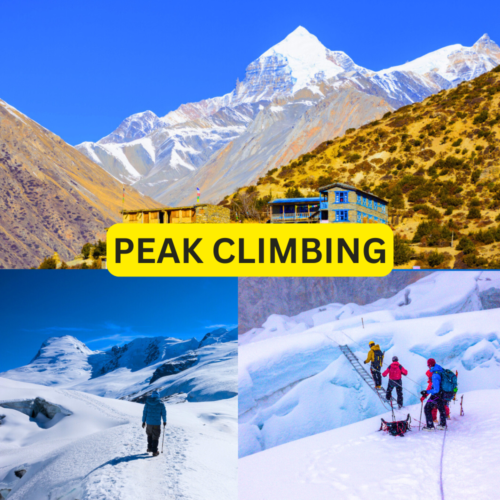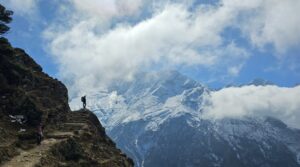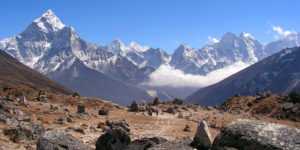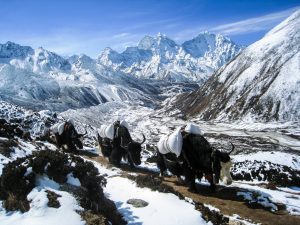Best Time to Visit Everest Base Camp (EBC)
October 18, 2024 admin

Your Guide to Visiting Everest Base Camp: The Best Times to Go

Are you dreaming of trekking to Everest Base Camp? Picking the best time to visit Everest Base Camp is crucial for an amazing experience. This guide will help you choose the perfect time, know what to expect, and prepare for the adventure of a lifetime.
Why Timing Matters?
When planning your trip to Everest Base Camp, the timing can change everything. Weather, crowd levels, and available services can all impact your trek. Let’s explore the best times to go!
Understanding the Weather

Everest Base Camp has a tough climate, with temperatures ranging from -20°C (-4°F) to 5°C (41°F). It gets colder as you climb higher, so bringing the right gear is key.
Rain and Dry Seasons
The region has two main seasons: the monsoon (June to September) with heavy rain, and the dry season (October to May) with clearer skies. The dry season is the best time for trekking!
Seasonal Breakdown: When to Go

1. Spring (March to May)
Spring is one of the best times to trek to Everest Base Camp. The weather is mild, with daytime temperatures between 10°C (50°F) and 15°C (59°F). Nights can drop to around -10°C (14°F). You’ll also see beautiful blooming rhododendrons.
Pros:
- Comfortable weather for trekking
- Gorgeous mountain views
- Lush scenery
Cons:
- Trails can be crowded, especially in April
- Occasional rain or snow showers
2. Summer (June to August)
Summer is the monsoon season, with heavy rain and cloudy skies. Daytime temperatures are between 15°C (59°F) and 20°C (68°F), and nights can be around 0°C (32°F). While trails may be slippery, you’ll find fewer people on the trails.
Pros:
- Fewer trekkers
- Lush, green landscapes
- Mild temperatures
Cons:
- Slippery trails from rain
- Low visibility for mountain views
3. Autumn (September to November)
Autumn is the peak season for trekking. The weather is stable, with temperatures between 10°C (50°F) and 15°C (59°F). This season offers clear skies and stunning mountain views. Plus, you can experience the Mani Rimdu festival during this time.
Pros:
- Amazing visibility for mountain views
- Comfortable trekking conditions
- Fewer crowds than spring
Cons:
- September can still be busy
- Cold temperatures at high elevations
4. Winter (December to February)
Winter is the least popular time to visit, with cold temperatures ranging from -5°C (23°F) to 5°C (41°F). Nights can drop to -20°C (-4°F). While trails may be icy, winter offers a unique experience.
Pros:
- Less crowded trails
- Stunning snow-covered views
- Lower prices for accommodations
Cons:
- Very cold temperatures
- Slippery, icy trails
- Some tea houses may be closed
Handling Crowds and Choosing Your Time
The busiest time to trek is from September to November, so if you want to avoid crowds, consider going during the off-season. Just be aware that some services might be limited.
Conclusion: Plan Your Perfect Trek
Choosing the best time to visit Everest Base Camp depends on what you want—great weather, fewer crowds, or cultural experiences. For stunning views and good conditions, spring and autumn are ideal. If you want peace and quiet, consider the off-season but remember the limited amenities.
Before you go, do some research, check the weather, and plan ahead for a fantastic trekking experience.
For personalized itineraries or more information on planning your trek, feel free to visit Luxury Holiday Trek or reach out at info@luxuryholidaytreks.com!
Here are some trekking packages:
FAQs
1) Can I trek to Everest Base Camp during the monsoon?
Yes, but be careful of slippery trails and low visibility.
2) When can I see the Mani Rimdu festival?
It usually happens in autumn, from late October to early November.
3) Is trekking in winter possible?
Yes, but it’s tough due to the cold and icy trails.
4) What’s the average temperature at Everest Base Camp?
It can range from -20°C (-4°F) to 5°C (41°F).
5) Should I book my stay in advance?
Yes, especially during busy seasons, to ensure you have a place to stay.










